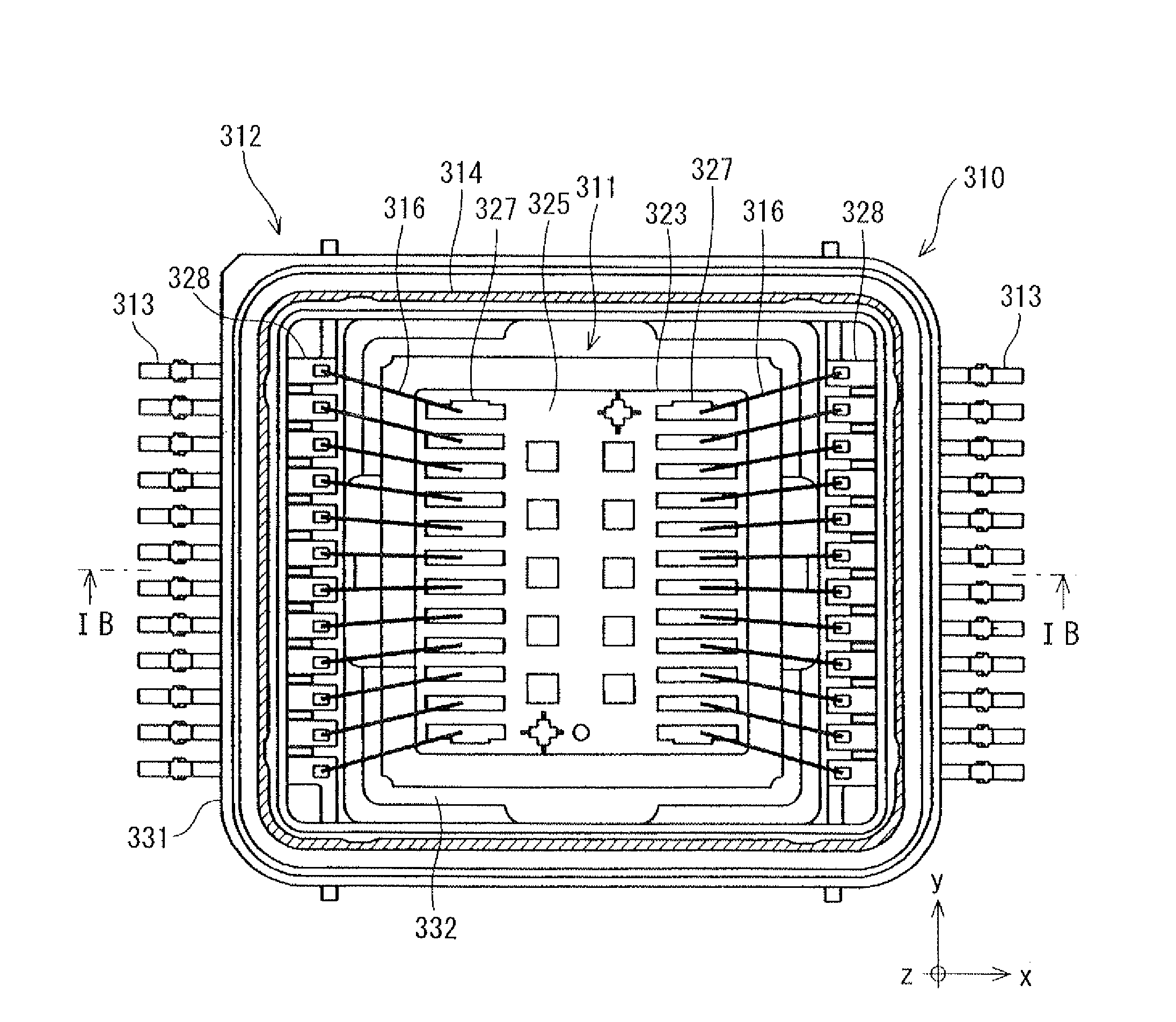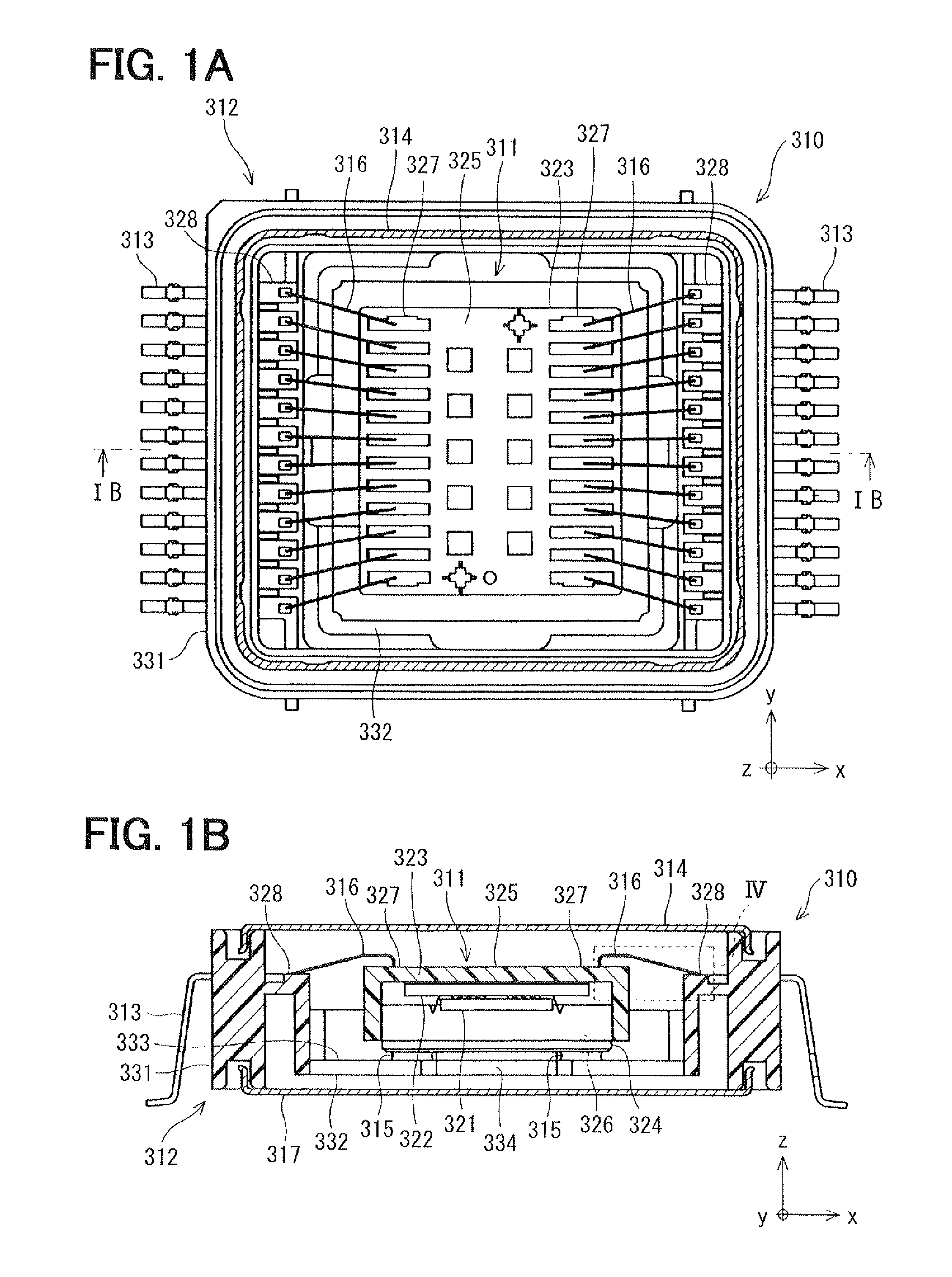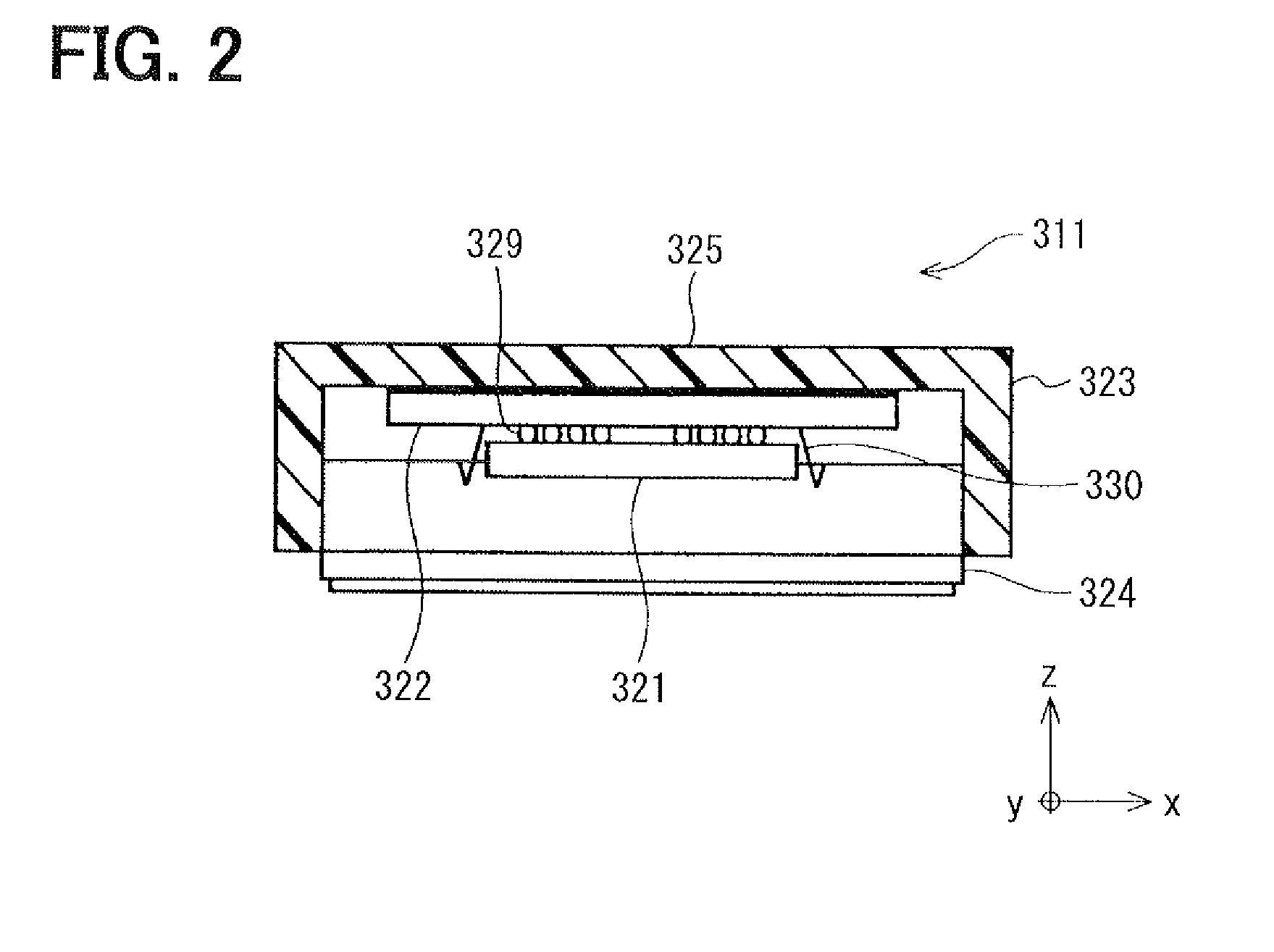[0008]The present invention is made in view of the aforementioned drawbacks, and it is an object of the present invention to provide a physical quantity sensor having a bonding wire with improved structural strength and durability while ensuring sufficient
vibration isolation performance.
[0009]According to an aspect of the present invention, a physical quantity sensor includes a sensing portion having an end wall, a casing, a vibration isolating member, an electrically conductive portion, a pad, and a bonding wire. The casing has a support portion for supporting the sensing portion. The support portion has a
support surface opposed to the end wall of the sensing portion. The vibration isolating member is disposed between the end wall of the sensing portion and the
support surface of the support portion to join the sensing portion to the casing. The vibration insulating member is configured to reduce a relative vibration between the sensing portion and the casing. The electrically conductive portion is provided on the casing. The pad is provided on the sensing portion. The bonding wire electrically connects the electrically conductive portion and the pad. The bonding wire extends from the pad to the electrically conductive portion while bending opposite to the
support surface. The bonding wire is configured to satisfy a relation of 20×d≦h, in which d is an outer
diameter of the bonding wire and h is a height of the bonding wire from the pad to a furthest point of the bend from the pad with respect to a direction perpendicular to the support surface. In the structure, the vibration isolating member is disposed between the support portion and the end wall of the sensing portion. The relative vibration between the casing and the sensing portion is reduced by the vibration isolating member. Further, the bonding wire is configured so that deformation of the bonding wire is reduced even if a
relative displacement between the sensing portion and the casing occurs. Accordingly, structural strength and durability of the bonding wire improve, and vibration isolation performance is ensured.
[0010]According to a second aspect of the present invention, a physical quantity sensor includes a sensing portion, a casing, a vibration isolating member, an electrically conductive portion, a pad, and a bonding wire. The casing encases the sensing portion therein. The casing provides a clearance between an inner surface thereof and an outer wall of the sensing portion. The vibration isolating member is disposed in at least a portion of the clearance to join the sensing portion to the casing. The vibration isolating member is configured to reduce a relative vibration between the sensing portion and the casing. The electrically conductive portion is provided on the casing. The pad is provided on a surface of the sensing portion. The bonding wire electrically connects the electrically conductive portion and the pad. The bonding wire extends from the pad to the electrically conductive portion and includes a bend. The bonding wire is configured to satisfy a relation of 20×d≦h, in which d is an outer
diameter of the bonding wire, and h is a height of the bonding wire from the pad to a furthest point of the bend from the pad with respect to a direction perpendicular to the surface of the sensing portion.
[0011]In the structure, the vibration isolating member is disposed between the sensing portion and the casing to join the sensing portion to the casing. The relative vibration between the casing and the sensing portion is reduced by the vibration isolating member. Further, the bonding wire is configured so that deformation of the bonding wire is reduced even if a
relative displacement between the sensing portion and the casing occurs. Accordingly, structural strength and durability of the bonding wire improve, and vibration isolation performance is ensured.
[0012]According to a third aspect of the present invention, a physical quantity sensor includes a sensing portion, a casing, a vibration isolating member, an electrically conductive portion, a pad and a bonding wire. The casing encases the sensing portion therein. The vibration isolating member is disposed between the sensing portion and the casing to hold the sensing portion within the casing and to reduce a relative vibration between the sensing portion and the casing. The electrically conductive portion is provided on the casing. The pad is provided on a surface of the sensing portion. The bonding wire electrically connects the electrically conductive portion and the pad. The bonding wire extends from the pad substantially perpendicular to the surface of the sensing portion, bends to extend substantially parallel to the surface of the sensing portion, and connects to the electrically conductive portion. The bonding wire is configured to satisfy a relation of 20×d≦h, in which d is an outer diameter of the bonding wire, and h is a dimension of the bonding wire from the pad to a furthest point of a bend with respect to a direction perpendicular to the surface of the sensing portion.
[0013]In the structure, the vibration isolating member is disposed between the sensing portion and the casing to join the sensing portion to the casing. The relative vibration between the casing and the sensing portion is reduced by the vibration isolating member. Further, the bonding wire is configured so that deformation of the bonding wire is reduced even if a
relative displacement between the sensing portion and the casing occurs. Accordingly, structural strength and durability of the bonding wire improve, and vibration isolation performance is ensured.
 Login to View More
Login to View More  Login to View More
Login to View More 


